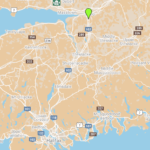Last week, Discover Halifax presented their wide-reaching and much anticipated five-year Integrated Tourism Master Plan (ITMP) to boost and recover local and international tourism in the city and across the region. The strategy has been many years in the making, but now comes at a time that the sector is reeling from losses of $800 million and counting due to the pandemic.
The plan’s 28 recommendations were put together with the input of stakeholders from the community, with the aim to improve conditions not just for tourists but for residents as well. One major focus is to upgrade both local and national transport links, which includes plans to facilitate cashless Interac payments on Halifax transit. Interac is already very popular to use online, and especially in online casinos. Visit https://new-casino.ca/bank/interac for more info about Interac Casinos.
Mixed Reception for Ambitious Plan
A summary of the ITMP, available from the Discover Halifax website, reveals an ambitious plan. Key goals include the development of the city’s arts, entertainment and culinary experiences in order to turn Halifax into a year-round destination. The vast majority of tourism currently occurs during the summer months, and the organization plan to work with local musicians in particular to make the city a live music destination.
The creation of showcase events, including one during the low season, and the development of a special Waterfront Arts District are also in the plan to keep tourists coming 365 days a year. It is expected that there would also be a boost to the economy as locals take advantage of the new entertainment options.
Another major focus of the report is on responsible tourism and community engagement. Local icons like Peggy’s Cove need sustainable tourism, and it is hoped that the cruise sector can grow while protecting the wildlife and environment. The ITMP aims to bring together disparate local tourism initiatives so that there is an integrated, community-driven approach.
However, many commentators have been quick to voice their skepticism of the plan, calling it naive and overly optimistic. The plan presupposes that travel and tourism will return relatively soon, while critics assert that the sector as a whole must expect disruptions for the next three or four years. The fact that the plan was completed before the pandemic adds credibility to these criticisms.
Optimism not misplaced, Discover Halifax claims
Despite the mixed reception, CEO of Discover Halifax Ross Jefferson remains optimistic. He points to the seven years of growth before the pandemic, adding that by taking a targeted and integrated approach that brings in communities, there is an opportunity to shape the way Halifax’s tourism grows in the future.
The heart of the plan, Jefferson explains, was to create destinations and experiences that benefit local residents. This in turn would make tourists want to come and have those experiences too. Improving air and road transport links and quality will help to facilitate the movement of more visitors to and within the region.
Some of the recommendations that have been expedited include investment in Peggy’s Cove, and granting public access to Georges Island for five weekends in the summer of 2020. There are also calls to revive a test project with WestJet that was put on hold when the pandemic hit – a promotion that would encourage travellers between North America and Europe to stop over in Halifax.
Tourism is extremely important to the economy of the Halifax region. During a more normal year, tourists spend an estimated $1.3 billion in the municipality. Over 4,000 businesses, employing approximately 34,000 people, are directly involved in tourism. Whether or not the plan is successful, it is clear that the events of the past year have been very damaging for the local economy.



